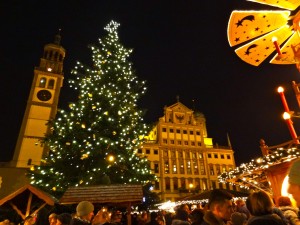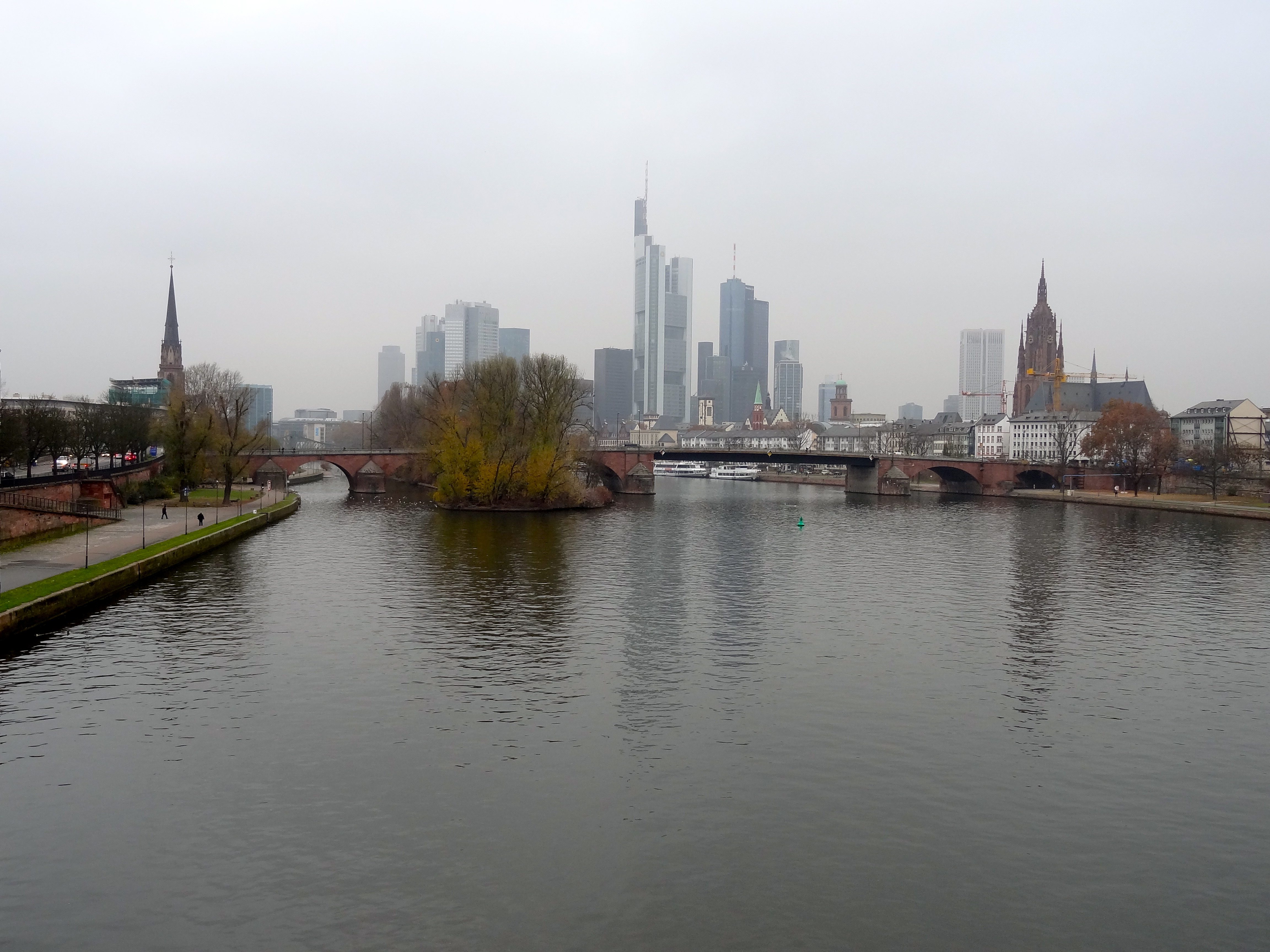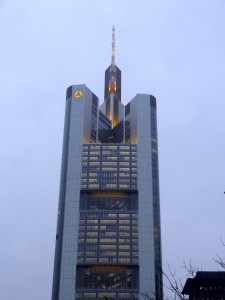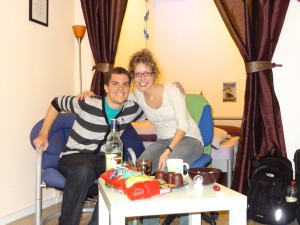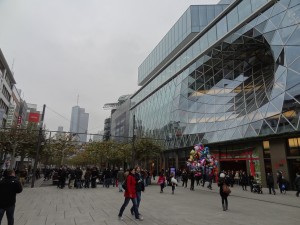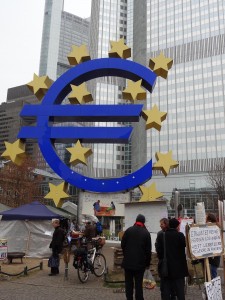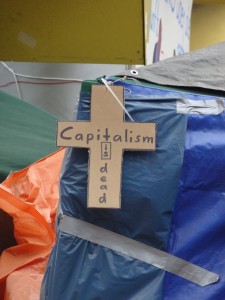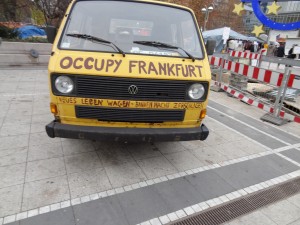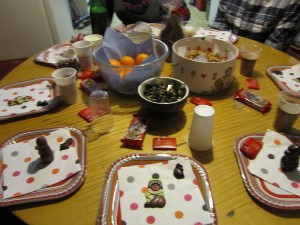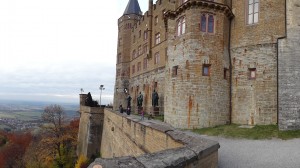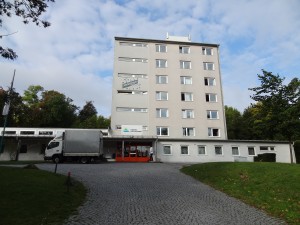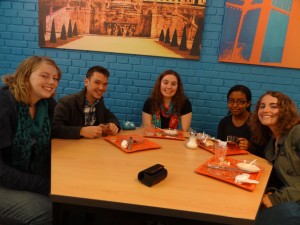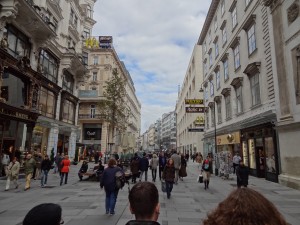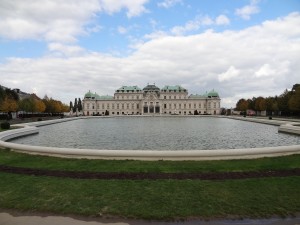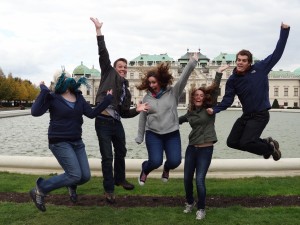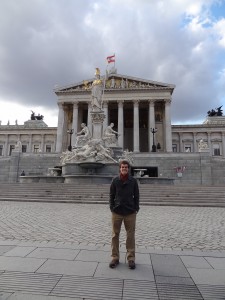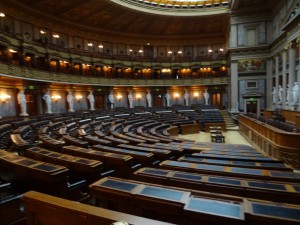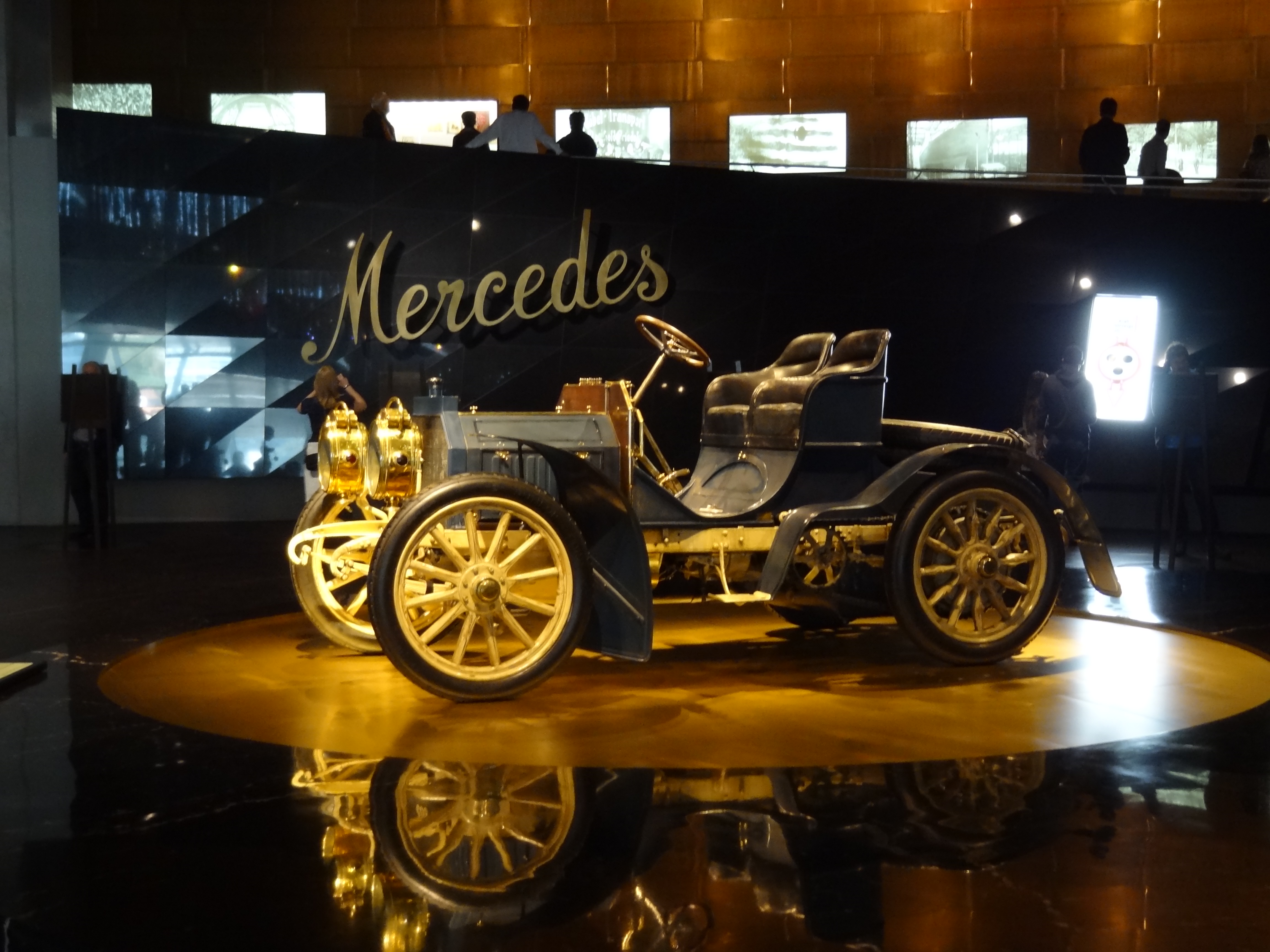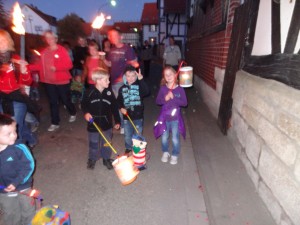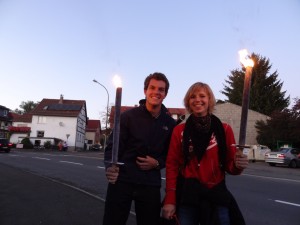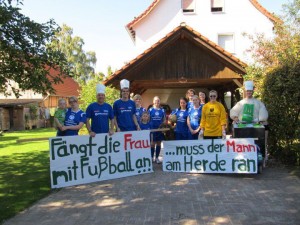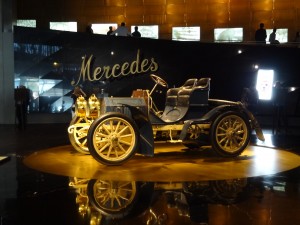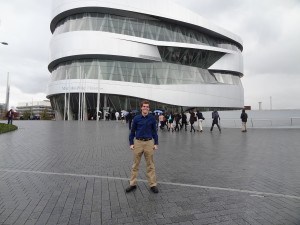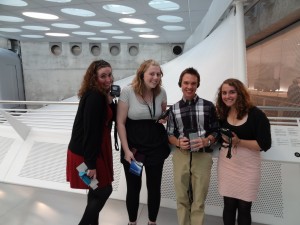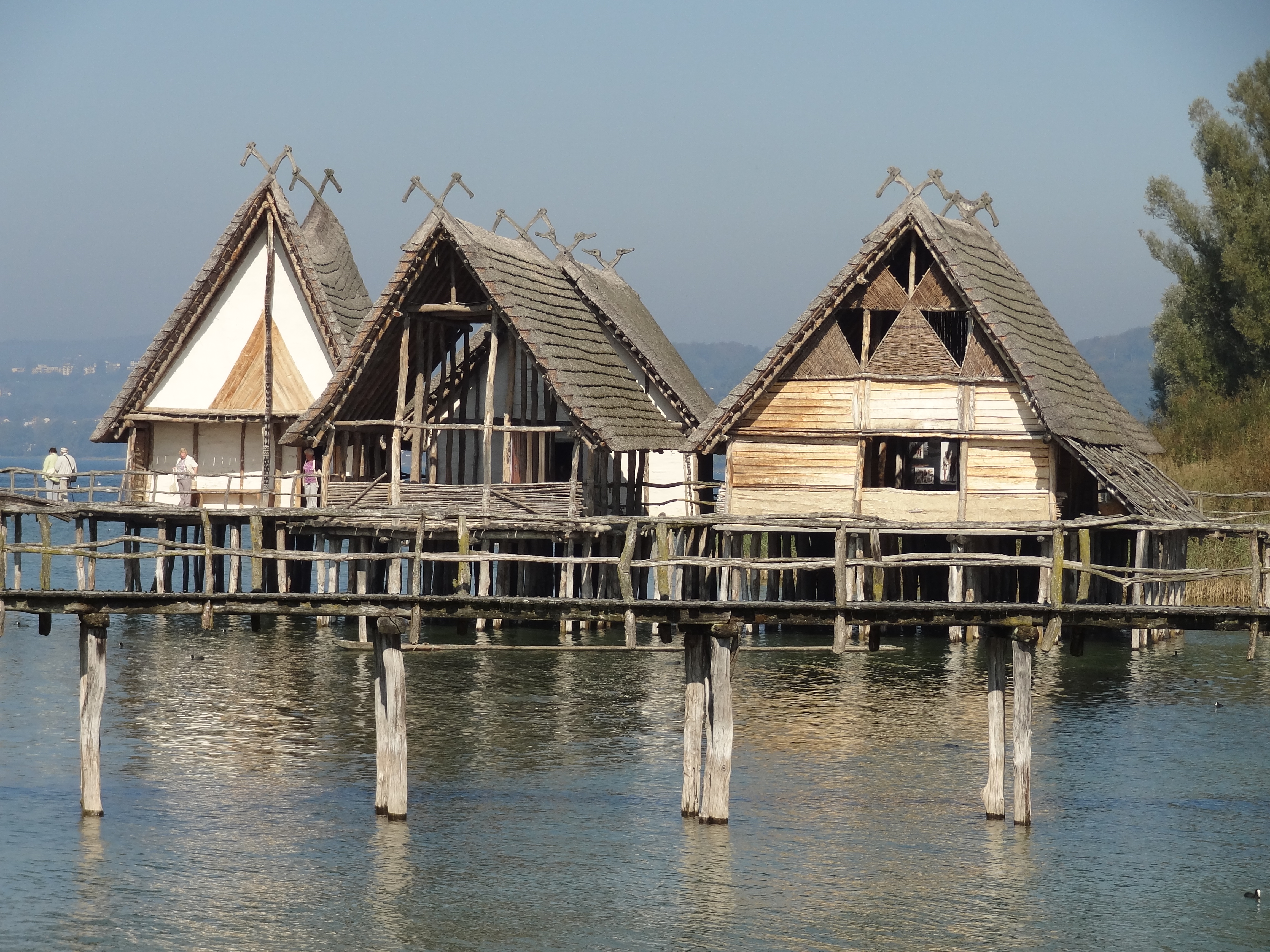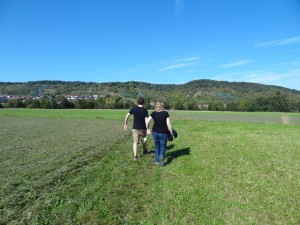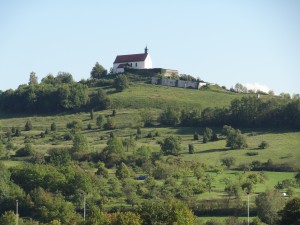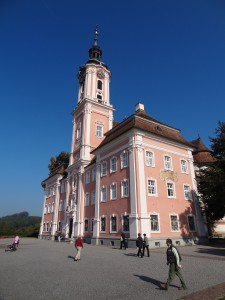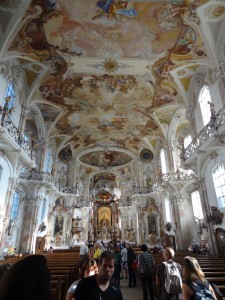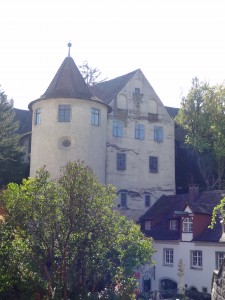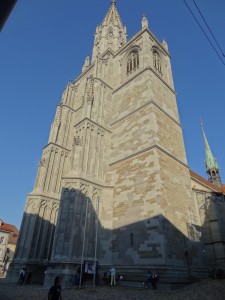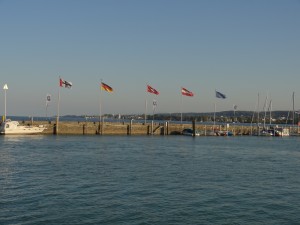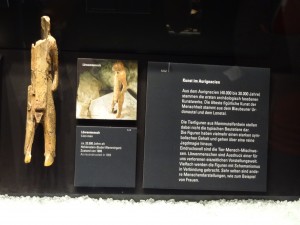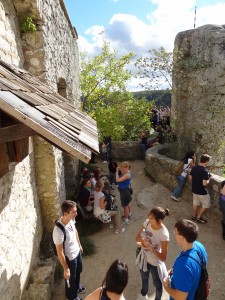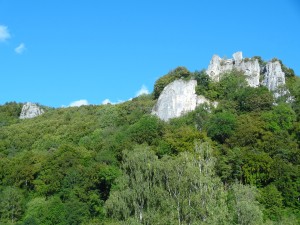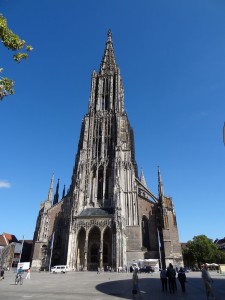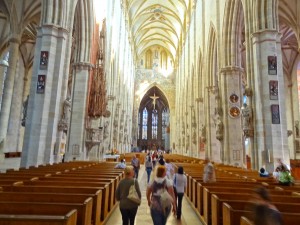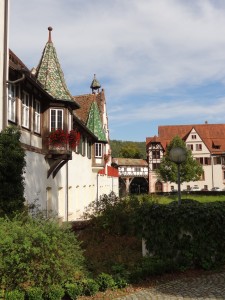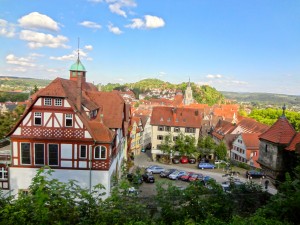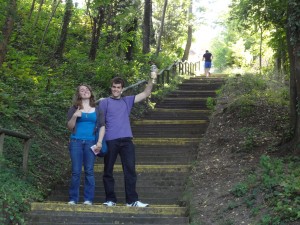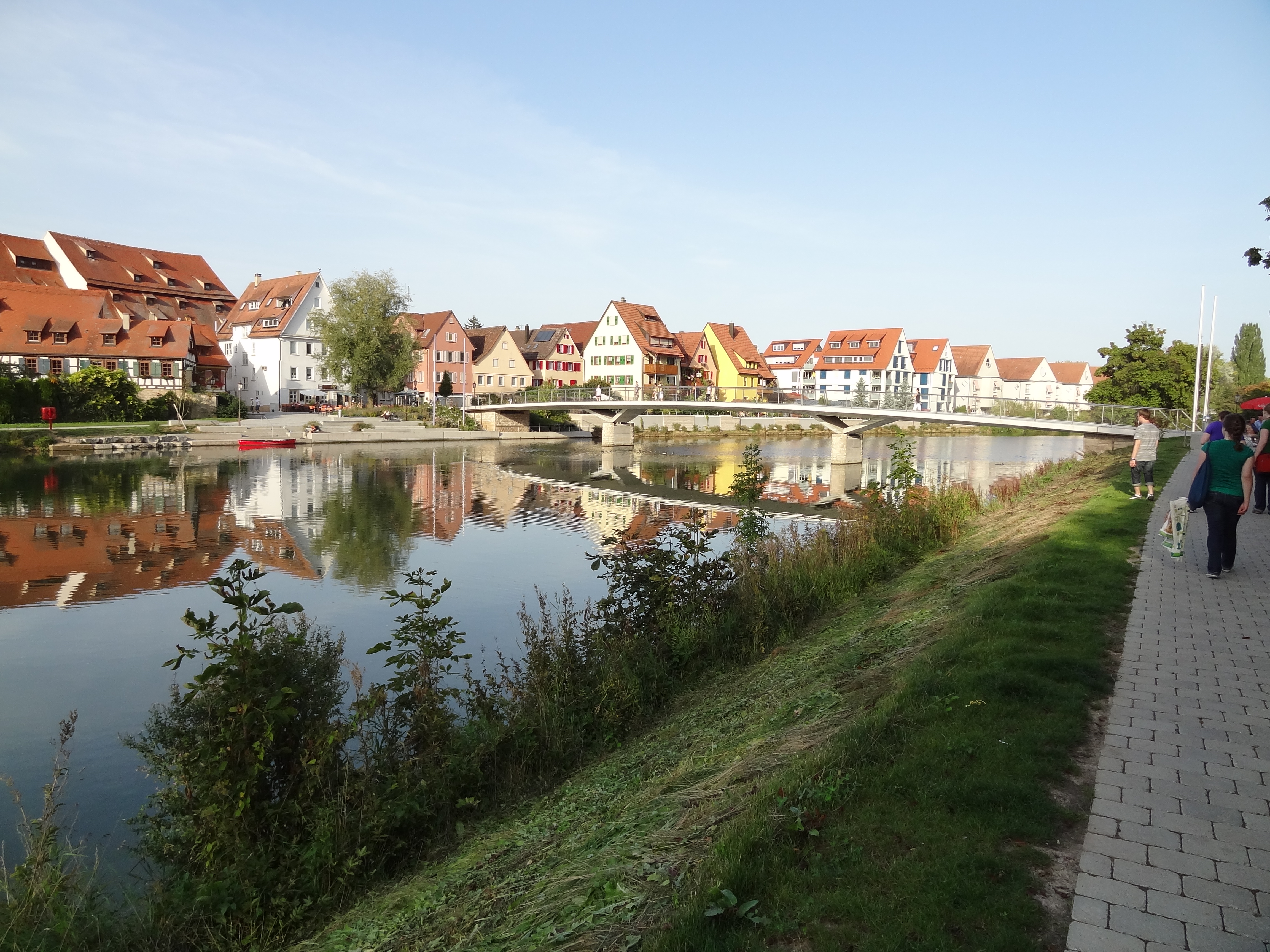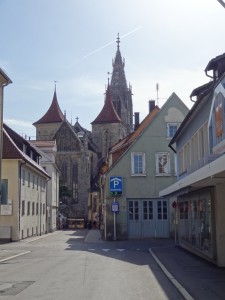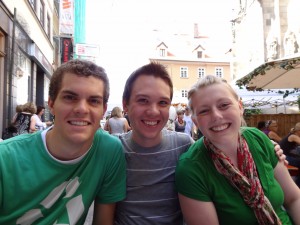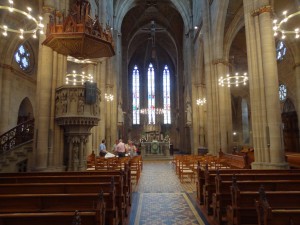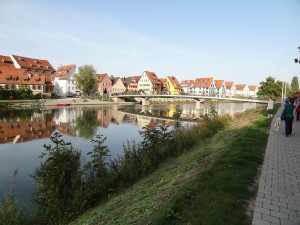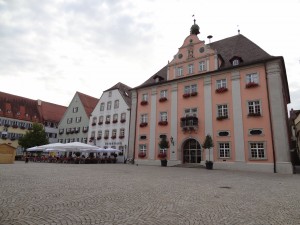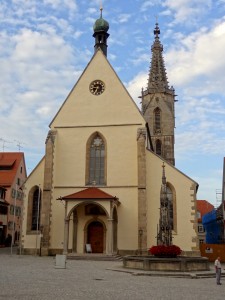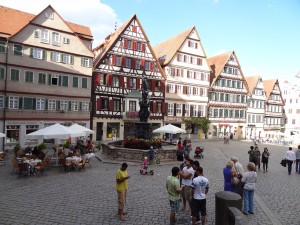Hallo everyone! December has certainly been an adventurous month so far, and I have even more planned for the coming weeks!
If fall in Baden-Württemberg was Weinfest season, the last month or so has definitely brought about the beginning of Weihnachtsmarkt (Christmas Market) season. The Germans are very into their “Markts” (Markets), which feature all sorts of stands, booths, and tents with people food, crafts, and other Christmas decorations and presents of all varieties. Although I have yet to find something at a Christmas market that I actually need, they are very nice to walk through, and enjoy the atmosphere. There’s nothing much more German than walking around a Christmas market on a cold day with a mug of hot, spiced wine and some marzipan as accordion players perform in the background!
On Saturday, December 3rd I visited a “Mittelalterliche Weihnachtsmarkt” (Medieval Christmas Market) in the nearby town of Esslingen. The town itself was absolutely beautiful – very picturesque and stereotypically “European.” The market itself was giant – it seemed to consume every open space in the entire little town. In addition to the regular market taking place (with fruits, vegetables and other groceries, similar to the weekly markets in Tübingen), there was also a regular, non-medieval Christmas market, AND the medieval Christmas market. It was a little bit of a maze navigating through it all, but the people dressed up as pirates and other medieval characters unknown to me were a good indicator of which market we were passing through. I‘m not a giant fan of Renaissance fairs / Medieval-themed things (some people get really into it) but it was still really cool to walk through and see all the themes and everybody dressed up. I didn’t get a chance to learn much about the town itself, but I definitely plan on visiting again when I can get a clear view of everything!
Since we were nearly to Stuttgart and had already boughten a Baden-Württemberg day pass for the train, we decided to go all the way into the city and see the Christmas market there. It was much easier getting on a train out of Esslingen than taking a train to Esslingen, as the Medieval Christmas Market is quite well-known in the area, and draws quite the crowd! Stuttgart was beautiful as always, and very festive-looking for the Christmas season. It was frigidly cold, but shortly after arriving I bought myself a Glühwein to keep warm! At many of the Christmas markets here (and some other ones, for that matter) you can buy Glühwein in special mugs with the name of the city and Weihnachtsmarkt written on them. In Germany, you always have to pay a deposit for glass bottles, coffee mugs at markets, etc. but many people choose to keep their mugs and not return them for the deposit. I’ve started collecting the Christmas market mugs, because I think they‘re really practical souvenirs, and they‘re not that expensive 😉 A mug of Glühwein in Stuttgart was €2.50, plus €2 Pfand (deposit.) So for €4.50, you can get some Glühwein and a souvenir mug for €2 cheaper than an empty souvenir mug from the Tourist Information Center in Tübingen. And, for someone like me who drinks coffee every day regardless of what country I‘m in, mugs serve a very useful purpose!
The Christmas Market in Stuttgart was probably my favorite one so far – but we didn’t end up staying long because of how cold it was. There was ice-skating, live music, plenty of food stands selling all sorts of traditional Christmas-season foods, and of course, all of the vendors selling Christmas Tree ornaments and everything else you could possibly decorate your house with for the season. It‘s really a shame that I don‘t go to Stuttgart more often – that‘s something I am going to change for the duration of my time here! It‘s so close, and there‘s so much to do there – it‘s just too bad that Stuttgart lies outside of the region where our student semester tickets for the busses/trains are valid. If I could go the whole way for free, I would spend much more time there for sure, since it‘s easy enough to get there.
Last Saturday, the 10th, I spent the day in Strasbourg, France on a day-trip organized by StudIT, the international student organization here at the Uni Tübingen. With the exception of having to wait for 45 minutes in the cold rain at 7:00 AM for the bus to arrive, it was a really great day. For €15, we were provided with transportation to and from Strasbourg, and a bus tour of the city. Strasbourg is an important city for the European Union, as the EU Parliament is based there, so it was really interesting to see all of the EU buildings etc. The bus tour took us through many interesting parts of the city, which was filled with so many different types of architecture, and I wish we would have had enough time to walk through everything we observed from the bus. After our tour, our tour guide took us through the city and showed us some different parts of the Weihnachtsmarkt that was going on there, and gave us (Jake, Hannah, Rachel, Emily, Me, and my French friend, Nathan) some tips on where to find a good restaurant. Much like Esslingen on an infinitely-larger scale, the city was engulfed in Weihnachtsmärkte – there were 12 separate Christmas Markets going on in nearly every open area of the city center. The market itself was much like the German ones, with a little bit of a French flair in terms of the food etc. being sold. Oh yeah, and because everything was written in French.
We were super lucky to have Nathan along to act as our translator, because although some of the vendors spoke German (because Strasbourg is directly on the border), many did not. AKA, we were complete idiots wandering through France. At lunch, he was nice enough to order for the five of us after translating the menu, as we clogged the line and surely annoyed everyone waiting behind us. It brought me back to my childhood memories of my family going through drive-throughs in our van. Nathan was like stressed-out parent speaking to the person at the other end of the microphone, trying to get all the orders right as all the kids in the back seat simultaneously screamed their detailed orders up to the front. Then of course, there‘s that moment when the car pulls away from the final window where you get your food, and after everything has been distributed and mom puts on the blinker to turn back onto the highway, someone realizes that they got the wrong order, or that something crucial is missing. That‘s what happened with my potatoes. So, Nathan dutifully left the table to return to the counter where he informed the employee that one of the stupid Americans didn’t get his potatoes. Problem solved. Merci beaucoup, monsieur.
After lunch, we walked to a very beautiful and well-known part of the city called “La Petit France” (The little France) before slowly making our way back to the bus and walking through the different markets. Like every European City, there was a giant church in the city center, where we poked inside to take a look and some pictures as well. We were surprised to see that there was a rockin‘ childrens‘ Nativity Program going on open to the public, with songs in English, German, and French. It was the most lively Christmas story I’ve ever seen. I’ve never heard christmas songs in church with so much bass – it was so cool I took a video. Overall, it was a great day in France, and now that I know a little more about the city, I hope to go back sometime in the Spring when it‘s a little warmer. Surprisingly to me, a lot of people actually complained about the trip, and although the organization was a little shaky at times, I really enjoyed it. For €15, I doubt you could take the train even halfway there, and we got to see a lot of interesting places over the six or so hours that we were there.
On Friday night, we got an email from Professor Malchow, Valpo‘s resident director in Reutlingen, about an opportunity to go to Bavaria on Sunday. Jake, Hannah and I decided to take advantage of the opportunity (poor Rachel was sick), and it turned out to be a really great day. For only €8 this time, we got the chance to tour the Dachau Concentration Camp, and see the city of Augsburg.
Concentration Camp visits are quite obviously, an extremely somber and depressing experience (I also toured Buchenwald as a high school student), but nonetheless part of an important chapter in history from which much can be learned. Although it‘s always a struggle for the Germans to deal with such a dark part of history, I think they do a great job openly acknowledging what happened and allowing everyone free access to the concentration camps (converted into museums) to learn about what went on there. None of us felt right about taking pictures, (although there were people who had pictures taken of them posing in front of the crematorium ovens) but I‘m sure I won‘t need any to remember the visit. It‘s a very powerful experience to walk through the barracks that were once overcrowded with people for whom every day was a struggle just to survive. Walking through the crematorium, gas chamber, and rooms where dead bodies were piled from floor to ceiling is an experience that can‘t really be put into words. It‘s truly sickening to see the cruelty of humanity in its worst form. Although unbelievably sad and depressing, I think it‘s important to see and learn about, and the displays throughout the camp and the main museum building are interesting, and well-presented. There are also audio-guides available (the only part of the self-guided tour that costs money) but ours didn’t seem to match up very well with the displays/areas of the camp.
We spent the afternoon in the beautiful city of Augsburg, beginning with a tour of the “Fuggerei.” The Fuggerei was the first “low-income housing project” founded by in the year 1521 by a man named Jakob Fugger, or, “Jakob the rich.” At the time, he had roughly ten times the amount of money that Bill Gates does today (adjusted of course for inflation and what not). Jakob Fugger was a banker as well as a nobleman in the Holy Roman Empire, and wanted to do something for the community, many suspect, out of guilt for his vast wealth and/or other life mistakes etc. (That part wasn’t exactly clear to me!) Anyway, the entire neighborhood was beautiful, and perfectly taken care of. To this day, residents only pay 88 cents to live there for the entire year, but the list of applicants is always growing. True to the original tradition upon which the Fuggerei was founded, residents must be Catholic (it is required that they pray three times a day, and because there are prayers to the virgin Mary, Protestants cannot fulfill this requirement), live in Augsburg, and demonstrate need. Once residents are back on their feet again, it is expected that they move out and make the apartments available for others in their times of need. The Fuggerei is largely supported by tourist money, as people like ourselves tour the neighborhood daily. To keep everything looking visually attractive and well taken care of, no trash cans are permitted to be left outside the apartments – everything must be brought to a collection center. We were able to tour an apartment preserved in its original condition from the time the Fuggerei was built, as well as a modern apartment, which featured a bedroom, a kitchen, and a living room loaded with all of the modern conveniences and comforts of home. The ground-floor apartments all have their own gardens, and every apartment unit has its own door – which was a symbol of status and dignity in the 1500s. During the second world war, bombs meant to be dropped on the nearby Rathaus were carried by the wind in the direction of the Fuggerei, were a large portion of the housing development was destroyed. One person died in the bombing, but the rest were safe in the Fuggerei Bunker, which has since been converted into a museum. Shortly after, the damaged apartments were reconstructed, and today there is absolutely no indication that any part of the beautifully-kept Fuggerei was once in ruins.
After our tour, we ate an excellent Bavarian lunch in the Rathskeller before making our way toward the Weihnachtsmarkt. We stepped inside a church in the marketplace to have a look around, and then proceeded to climb to the top of the bell tower for a view of the city and the christmas market below.
The Augsburger Weihnachtsmarkt was one of my favorites that we have visited so far. The weather wasn’t too cold, the market wasn’t large enough to get lost in, every stand had something interesting to look at, and the christmas spirit felt by all was greatly enhanced with a cone of roasted nuts and a glühwein (which, once again, came in a really cool souvenir mug!) We didn’t have a ton of time to hang around, and after about an hour at the market we were back on the bus for the three-and-a-half hour ride back to Tübingen.
This weekend is equally busy: Tomorrow, (on Friday) I am going to Nürnberg to see the city as well as the largest / most famous Christmas market in Germany. Saturday I‘m off to Zürich to explore the city a little, and to visit Switzerland for the first time, which I‘m very excited about 🙂
This semester blogging for Valpo as a Study Abroad Representative has been great. Unfortunately, due to funding issues, I was not able to be granted a job for the second semester. If you are interested in continuing to read my blog posts / tweets, I will post the links below!
Thanks for reading, and bis dann!
http://abroadintuebingen.blogspot.com/
http://twitter.com/#!/zmnelson









